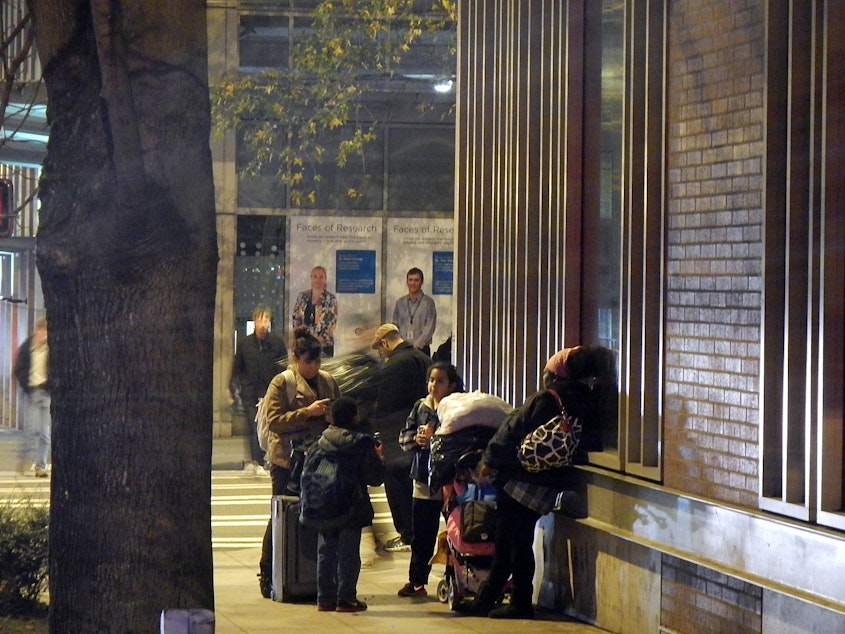New city data show more homeless being housed this year

The first six months of 2018 saw intense debate in Seattle over the city’s response to homelessness. As factions went to war over a tax on large businesses to pay for affordable housing and homeless services, people questioned the efficacy and accountability of existing service programs.
There was little current program data to draw on as the debate raged. But newly released numbers from the city shows progress has been made.
The system continues to be overwhelmed by the sheer number of people becoming homeless, and the city’s tiny house villages seem to be struggling to move people out of the villages into permanent housing. But the new data does show some bright spots.
More people were housed in the first six months of 2018 than the year before. More than 2,600 households went from homelessness to permanent housing between Jan. 1 and June 30 of this year. That’s a 35 percent increase over the same time period last year.
Another 1,815 households got help from city programs to stay housed in the first half of 2018.
The city also made strides in addressing racial disparities in the system. Native American and black households are seven times and five times more likely to experience homelessness than their white neighbors, respectively. The city made closing this gap a priority in contracts bid late last year, including funding three community organizations for the first time to provide culturally-relevant services.
And the results are clear. City-funded programs housed 284 Native American households in the first half of 2018. That’s 11 more households than were housed in all of 2017.
Additionally, more than 1,700 African American households went from homeless service programs to housing in the first six months of this year. The exit rate from services to housing went up 10 percent for that population this year over last.
“Credit should be given to programs across the board for really taking our racial equity targets seriously and doing everything they can to make sure they’re hitting those,” said Jason Johnson, interim director of the City’s Human Services Department. He said having the cultural-competency of grassroots organizations has had a positive impact.
While the city saw better results in many programs in the first half of 2018 – including increased rates of housing through diversion and rapid rehousing programs – one of the more controversial approaches to tackling homelessness fell short.
The city has increased investment in its tiny house villages this year, more than doubling the number of spots available from the beginning of 2017 to the beginning of 2018. But, in the first six months of this year, the rate at which people were leaving those villages for permanent housing went down 5 percent over last year.
In the first six months of 2018, 33 people left villages for permanent housing. That number was 39 last year, when fewer villages were open.
Johnson said the villages serve a vital role in the system. They’re more attractive for people who have been outside for a long time and they’re at capacity every night.
“That said, they serve a high need population and it is not always quick, the work of getting individuals out of that program and into permanent housing,” he said.
Seattle has budgeted more than $86 million in 2018 across more than a dozen departments to address the homelessness crisis.
While the newly released data shows strides have been made, the crisis on the streets is still apparent. More than 12,000 people are homeless in King County on any given night.
"We still have thousands of people living unsheltered in our community and by no means do we celebrate these results as a way to say we’re at the finish line,” Johnson said.
When asked if the city is getting good enough results for the amount of money being spent, Johnson spoke to his department’s roughly $60 million investment.
“We’re seeing more people served, we’re seeing more people move through programing and into permanent housing and we’re seeing that happen at rates that we haven’t seen before," Johnson said.
Johnson knows there’s frustration and that the public is howling for accountability. He said the city is not only investing in programs that work, but also setting clear expectations.
For the first time, service providers with pay for performance measures in their contracts will have a small portion of funding withheld from programs that aren’t housing enough people. Data shows 65 percent of programs subject to performance measures in their contracts hit the mark in the second quarter of 2018. Those that didn’t, 17 programs, will lose 3 percent of their funding for the quarter.
Service providers have said in the past that this will be detrimental and could lead to reduced services. Johnson, however, said the city will work closely with providers to help them improve housing outcomes.

